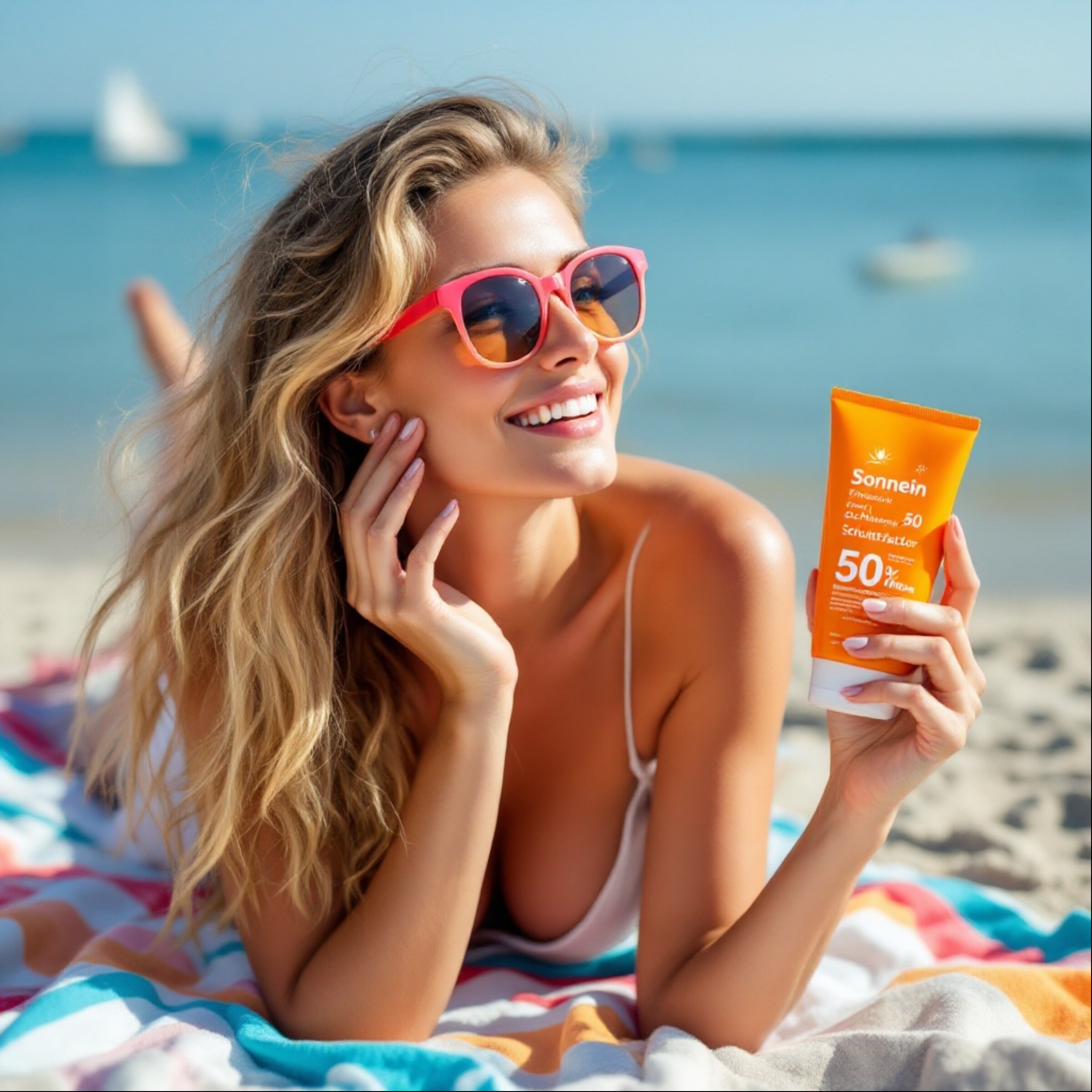Beach Sun Safety Tips - Day at Sandaway Suites & Beach in Maryland
As you gear up for a day of sun-soaked fun at Sandaway Suites & Beach in Maryland, it's essential to prioritize sun safety while reveling in the beautiful surroundings. The warm sands and sparkling waters beckon, but sun exposure can pose risks that can dampen your day. By arming yourself with the ultimate beach sun safety tips, you can ensure that your beach experience is not only enjoyable but safe too. From selecting the right sunscreen to staying hydrated and knowing when to seek shade, these strategies will help protect your skin and keep your spirits high. So grab your beach towel, prepare for a memorable adventure, and dive into our essential guide to sun safety at Sandaway Suites & Beach! Your day of fun in the sun is just a few tips away.
Ultimate Beach Sun Safety Tips for a Fun-Filled Day at Sandaway Suites & Beach in Maryland
Understanding the Importance of Sun Safety
When planning a beach day, it’s easy to focus on the fun aspects such as swimming, building sandcastles, and enjoying a good book by the waves. However, sun safety should be a top priority. The sun’s ultraviolet (UV) rays can cause significant damage to your skin, leading to painful sunburns, premature aging, and an increased risk of skin cancer. Understanding the importance of sun safety sets the foundation for a fun and safe beach experience.
Sun exposure doesn’t just affect your skin; it can also lead to heat exhaustion and dehydration. These conditions can escalate quickly, especially when you’re engrossed in beach activities. Being aware of the dangers of prolonged sun exposure helps you take proactive steps to protect yourself and your loved ones. By prioritizing sun safety, you ensure that your beach day remains enjoyable and free from health risks.
Moreover, sun safety is crucial for all age groups, from young children whose skin is more sensitive to older adults who may have existing skin conditions. Everyone in your group needs to be aware of sun safety practices to make the most out of the day without compromising health. A fun-filled day at Sandaway Suites & Beach is best enjoyed with the peace of mind that you’re protected from the sun’s harmful effects.
The Risks of Sun Exposure
Prolonged exposure to the sun’s UV rays can lead to sunburn, which is not just uncomfortable but can also have long-term effects on your skin. Sunburn accelerates skin aging, causing wrinkles, fine lines, and an increased risk of developing skin cancer over time. The immediate pain and redness of sunburn can ruin your vacation, making it difficult to enjoy other activities. By being aware of these risks, you can take steps to prevent sunburn and protect your skin.
Another risk associated with too much sun exposure is heat exhaustion, which can manifest as dizziness, headache, nausea, and excessive sweating. In severe cases, heat exhaustion can lead to heat stroke, a life-threatening condition that requires immediate medical attention. Recognizing the symptoms early and taking preventive measures such as staying hydrated and seeking shade can help you avoid these health issues while at the beach.
Dehydration is also a significant risk when spending time under the sun. The combination of heat and physical activity increases your body’s need for fluids, and failing to stay hydrated can lead to serious health problems. Drinking plenty of water and avoiding alcohol and caffeinated beverages are essential steps to maintaining hydration and preventing dehydration-related complications.
Essential Sun Safety Gear
When packing for a beach day at Sandaway Suites & Beach, including sun safety gear is a must. A wide-brimmed hat is one of the best ways to protect your face, neck, and ears from the sun. Hats with a brim that measures at least 3 inches all around offer the best protection. Additionally, sunglasses with UV protection help shield your eyes from harmful rays, reducing the risk of cataracts and other eye damage.
Beach umbrellas or tents provide necessary shade during peak sun hours, allowing you to take breaks from direct sun exposure. Opt for umbrellas with a high UPF (Ultraviolet Protection Factor) rating to ensure maximum protection. Lightweight, long-sleeved shirts and pants made from breathable fabrics can also protect your skin without making you too hot. Brands that specialize in sun-protective clothing offer stylish options that keep you cool and protected.
Don’t forget to pack a beach cover-up or sarong, which can be easily thrown on for added protection when you’re not in the water. These versatile pieces can also be used to cover your shoulders and back, areas that are often missed when applying sunscreen. By equipping yourself with the right gear, you can enjoy your beach day without worrying about the harmful effects of the sun.
Choosing the Right Sunscreen
Selecting the right sunscreen is crucial for effective sun protection. Look for a broad-spectrum sunscreen that protects against both UVA and UVB rays. UVA rays are responsible for skin aging, while UVB rays cause sunburn. A sunscreen with an SPF (Sun Protection Factor) of at least 30 is recommended for most skin types, although higher SPF levels provide more protection, especially for those with fair skin.
When choosing a sunscreen, consider your skin type and any specific needs you might have. For example, if you have sensitive skin, opt for a sunscreen that is fragrance-free and hypoallergenic. Water-resistant sunscreens are ideal for beach outings, as they provide longer-lasting protection even after swimming or sweating. Remember, no sunscreen is entirely waterproof, so reapplication is key.
Some sunscreens come in different forms, such as lotions, sprays, sticks, and gels. Lotions are great for full-body coverage, while sticks and gels are useful for targeted areas like the face. Sprays can be convenient, but make sure to apply them generously and evenly. Reading labels and reviews can help you find a product that suits your needs and provides reliable protection throughout your beach day.
How to Apply Sunscreen Effectively
The effectiveness of your sunscreen largely depends on how well you apply it. Start by applying sunscreen at least 15 to 30 minutes before heading out to the beach to give it time to absorb into your skin. Make sure to cover all exposed areas, including often-missed spots like the tops of your feet, the back of your neck, and your ears. Use a generous amount—most adults need about one ounce (enough to fill a shot glass) to cover their entire body.
Reapplication is crucial for maintaining protection. Sunscreen should be reapplied every two hours, or more frequently if you’re swimming or sweating. Even water-resistant sunscreens lose their effectiveness after about 80 minutes in the water, so make sure to reapply as soon as you dry off. Don’t forget to reapply sunscreen after towel drying, as this can remove the protective layer from your skin.
For children, it’s important to choose a sunscreen that is safe for their delicate skin. Pediatricians often recommend using sunscreens containing zinc oxide or titanium dioxide, which are less likely to cause irritation. Be diligent in reapplying sunscreen to children, as they are more susceptible to sunburn and the long-term effects of UV exposure. Teaching them good sun safety habits from a young age will help protect their skin now and in the future.
Timing Your Beach Visit for Optimal Safety
The timing of your beach visit can significantly impact your exposure to the sun’s harmful rays. The sun is strongest between 10 a.m. and 4 p.m., so planning your beach activities outside of these hours can reduce your risk of sunburn and heat-related illnesses. Early morning and late afternoon are ideal times to enjoy the beach with less intense sun exposure.
If you do plan to be on the beach during peak sun hours, make sure to take frequent breaks in the shade. A beach umbrella or a nearby shaded area can provide relief from the direct sun and help prevent overheating. Setting up a comfortable shaded spot can also serve as a base for your belongings and a place to rest and rehydrate.
Monitoring the UV index can also help you plan your beach day. The UV index measures the strength of UV radiation at a particular place and time, with higher values indicating greater risk of harm from unprotected sun exposure. Many weather apps and websites provide daily UV index forecasts, allowing you to make informed decisions about sun protection and the best times to be outdoors.
Staying Hydrated Under the Sun
Staying hydrated is essential for maintaining your energy and preventing heat-related illnesses while at the beach. The combination of sun exposure and physical activity increases your body’s need for water, so it’s important to drink plenty of fluids throughout the day. Water is the best choice, but you can also include hydrating foods like fruits and vegetables in your beach snacks.
To ensure you stay hydrated, bring a reusable water bottle and refill it regularly. Setting reminders to take sips of water every 15 to 20 minutes can help you maintain adequate hydration levels. Avoid beverages that can dehydrate you, such as alcohol and caffeinated drinks, as they can increase fluid loss and the risk of dehydration.
Signs of dehydration include dry mouth, headache, dizziness, and dark urine. If you or anyone in your group experiences these symptoms, it’s important to find shade and drink water immediately. Severe dehydration can lead to heat exhaustion or heat stroke, both of which require prompt medical attention. By prioritizing hydration, you can keep your body cool and enjoy your beach activities safely.
Recognizing Signs of Sunburn and Heat Exhaustion
Despite your best efforts, sunburn and heat exhaustion can still occur, so it’s important to recognize the signs and know how to respond. Sunburn typically appears as red, painful skin that is warm to the touch. In severe cases, blisters may form, and you may experience chills, fever, or nausea. If you notice signs of sunburn, seek shade immediately and apply a cool compress to the affected area.
Heat exhaustion symptoms include heavy sweating, weakness, dizziness, headache, and nausea. If you or someone in your group shows signs of heat exhaustion, move to a cooler place, lie down, and elevate the legs slightly. Drink cool water or a sports drink to help replenish lost fluids and electrolytes. Applying cool, wet cloths to the skin can also help lower body temperature.
If symptoms of sunburn or heat exhaustion worsen or don’t improve, seek medical attention. Severe sunburn may require professional care, and untreated heat exhaustion can progress to heat stroke, a medical emergency. By recognizing the signs early and taking prompt action, you can mitigate the effects and ensure a safe and enjoyable beach day.
Fun Activities That Promote Sun Safety
Sun safety doesn’t have to be boring! There are plenty of fun activities you can enjoy while staying protected from the sun. Building sandcastles or playing beach volleyball can be done in the early morning or late afternoon when the sun is less intense. These activities not only provide entertainment but also help you stay active and enjoy the beach experience.
Snorkeling or swimming are great ways to stay cool and active while minimizing sun exposure. Wearing a rash guard or swim shirt with built-in UV protection can provide an extra layer of defense against the sun. Exploring the underwater world can be both exciting and educational, making it a perfect family-friendly activity.
Beachcombing and shell collecting are relaxing activities that can be done under the shade or while wearing sun-protective clothing. These activities allow you to explore the natural beauty of Sandaway Suites & Beach while staying safe from the sun’s rays. By incorporating sun safety into your beach activities, you can have fun while protecting your skin and health.
Conclusion: Enjoying a Safe Day at Sandaway Suites & Beach
A day at Sandaway Suites & Beach in Maryland promises fun and relaxation, but it’s essential to prioritize sun safety to ensure your experience is both enjoyable and safe. By understanding the importance of sun protection, recognizing the risks of sun exposure, and equipping yourself with essential sun safety gear, you can prevent sunburn and heat-related illnesses.
Choosing the right sunscreen and applying it effectively, timing your beach visit, staying hydrated, and recognizing signs of sunburn and heat exhaustion are all crucial steps in maintaining sun safety. Incorporating fun activities that promote sun protection can enhance your beach experience while keeping you and your loved ones safe.
With these ultimate beach sun safety tips, you’re well-prepared for a memorable and safe day at Sandaway Suites & Beach. So grab your beach towel, sunscreen, and water bottle, and enjoy everything this beautiful beach has to offer. Remember, a sun-safe beach day is a happy and healthy one!
 Sun Safety Tips for the Beach
Sun Safety Tips for the BeachOther Articles you may like

Discover the Legend of Blackbeard the Pirate Ahoy, history enthusiasts! Get ready to embark on an exhilarating journey as we delve into the captivating story of Blackbeard, one of the most infamous pirates to sail the seas. This article takes you through his thrilling exploits across the Chesapeake Bay, East Coast, and the enchanting West Indies. Known for his fierce demeanor and theatrical tactics—like lighting slow-burning fuses in his beard during battle—Blackbeard, whose real name was Edward Teach, created a legacy that continues to fascinate adventurers and historians alike. Join us as we uncover the audacious raids, daring conquests, and the ultimate downfall of this legendary figure, and explore the enduring impact he had on the world of piracy. Set sail with us into the storied past of Blackbeard the Pirate! Who knows, could you find pirate treasure at Sandaway Beach?


